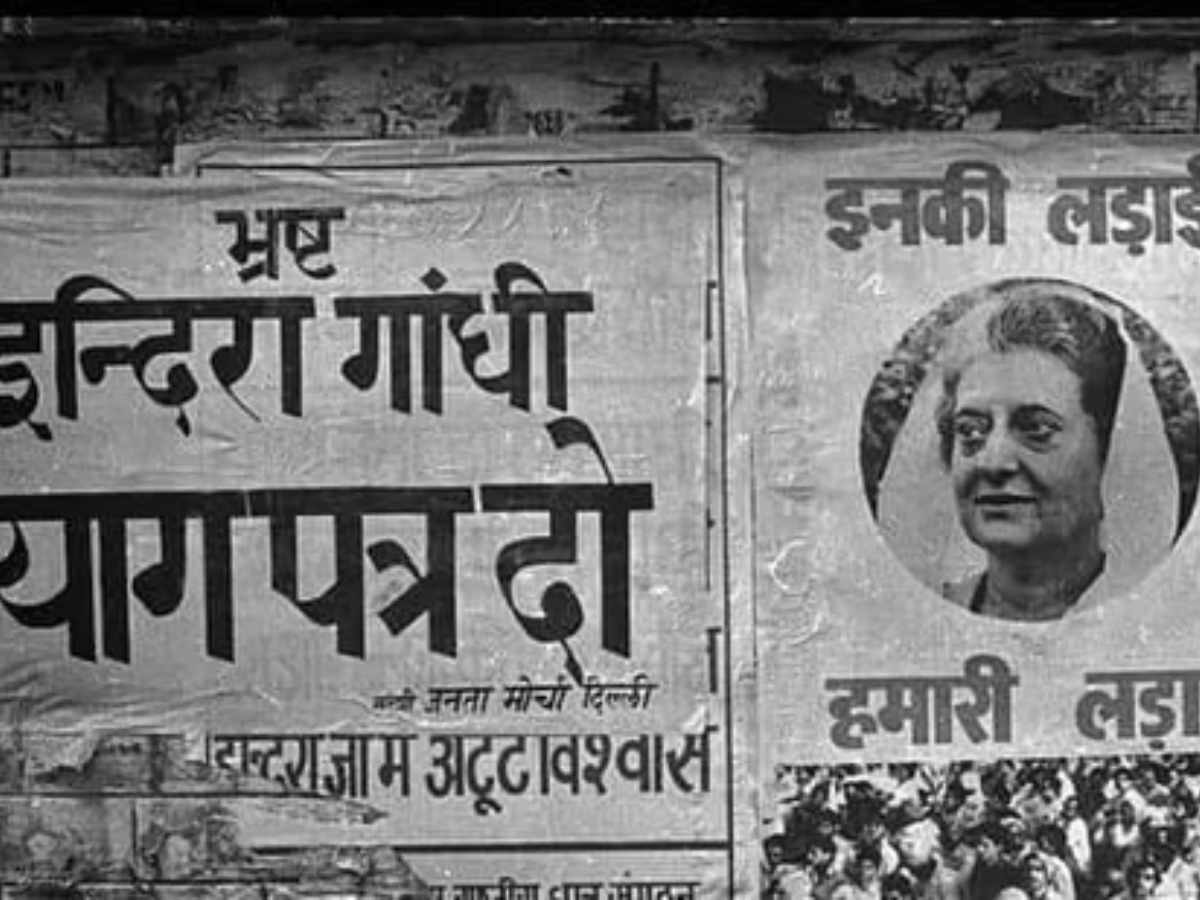Exactly 49 years ago, India woke up to a shocking announcement. On June 25, 1975, Prime Minister Indira Gandhi declared a state of Emergency across the country. For the next 21 months, India wasn’t the same. The press was silenced, thousands were jailed, and people’s basic rights were taken away.
Gandhi made the announcement on All India Radio, telling the country, “The President has proclaimed the Emergency. This is nothing to panic about. I am sure you are all aware of the deep and widespread conspiracy, which has been brewing ever since I began to introduce certain progressive measures of benefit for the common man and woman in India.”
But what exactly led to this drastic move?
What Triggered the Emergency?
Let’s go back a bit. In the 1971 general elections, Indira Gandhi won a big victory from the Rae Bareli seat, defeating socialist leader Raj Narain. But Narain wasn’t done—he filed a case against her, accusing her of cheating during the elections by using government officers for her campaign.
On June 12, 1975, the Allahabad High Court ruled against her. She was found guilty of electoral malpractice and was banned from holding office for six years.
With growing protests and pressure from political opponents like Jayaprakash Narayan, Gandhi felt cornered. That’s when she decided to declare a state of Emergency.
What Happened During the Emergency?
Once Emergency was declared, everything changed overnight.
-
Opposition leaders like JP Narayan, Atal Bihari Vajpayee, L.K. Advani, and Morarji Desai were thrown in jail.
-
Newspapers were told what they could and couldn’t print.
-
Citizens lost their fundamental rights.
-
Even the courts couldn’t help anyone.
Gandhi’s son, Sanjay Gandhi, became a key player during this time. He launched forced sterilization campaigns, demolished slums, and led programs that many called abusive and authoritarian.
Why People Still Talk About It
Prime Minister Narendra Modi, in a social media post, said. “Today is a day to pay homage to all those great men and women who resisted the Emergency. The #DarkDaysOfEmergency reminds us of how the Congress Party subverted basic freedoms and trampled over the Constitution of India which every Indian respects greatly.”
He added. “Any person who disagreed with the Congress was tortured and harassed. Socially regressive policies were unleashed to target the weakest sections.”
Modi also said the people who imposed the Emergency “have no right to profess their love for our Constitution.”
During the first day of Parliament’s new session, he called it “a black spot” on Indian democracy.
A Quick Timeline of the 1975 Emergency
-
June 12, 1975: Indira Gandhi found guilty by Allahabad High Court.
-
June 25, 1975: Emergency declared.
-
June 26, 1975: Gandhi addressed the nation.
-
January 18, 1977: Gandhi suddenly called for fresh elections.
-
March 21, 1977: Emergency officially ends.
How It Finally Ended
As criticism mounted and resistance grew, Gandhi surprised everyone by calling for elections in January 1977. She also released political prisoners. In the March 1977 elections, the Congress Party lost, and the Janata Party came to power. It was the first time Congress had lost a general election since independence.
Leaders Look Back at the Emergency
Union Home Minister Amit Shah didn’t hold back, “On 25 June 1975, then Prime Minister Indira Gandhi, showing her dictatorial mindset, strangled the soul of Indian democracy by imposing an emergency in the country. Lakhs of people were jailed without any reason and the voice of the media was suppressed.”
He also said the Modi government had decided to mark June 25 as “Constitution Murder Day”, to honor those who stood up for democracy during that time.
Lok Sabha Speaker Om Birla said, “The day of June 25, 1975, will always be known as a black chapter in the history of India.”







